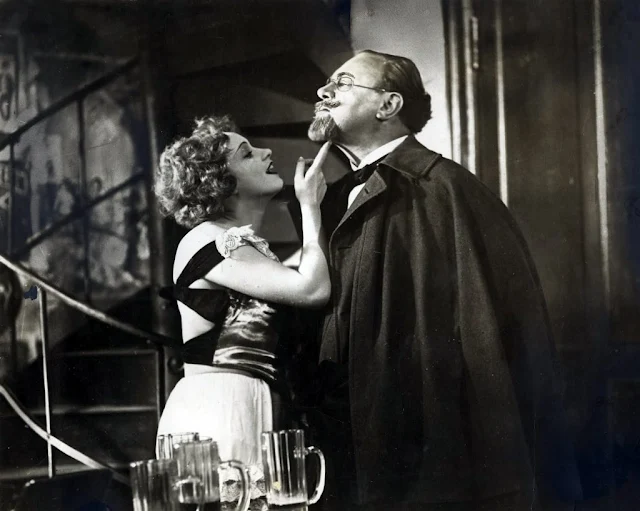 |
| Marlene Dietrich in The Devil Is a Woman |
Capt. Don Pasqual "Pasqualito" Costelar: Lionel Atwill
Antonio Galvan: Cesar Romero
Gov. Don Paquito "Paquitito": Edward Everett Horton
Señora Perez: Alison Skipworth
Morenito: Don Alvarado
Tuerta: Tempe Pigott
Alphonso: Francisco Moreno
Director: Josef von Sternberg
Screenplay: John Dos Passos, Sam Winston, David Hertz, Oran Schee
Based on a novel by Pierre Louÿs
Cinematography: Josef von Sternberg
Art direction: Hans Dreier, Josef von Sternberg
Film editing: Sam Winston
Costume design: Travis Banton
Music: John Leipold, Hans Roemheld
Josef von Sternberg wanted to give The Devil Is a Woman the title of the music by Rimsky-Korsakov on which the film's score is based, Capriccio Espagnol, but studio head Ernst Lubitsch overruled him. The decision probably helped the movie a little at the box office -- though it was a flop that ended Sternberg's career at Paramount as well as helping Dietrich get stigmatized as "box office poison" in an infamous complaint by a distributor. But The Devil Is a Woman really is a "Spanish caprice," a film that has about as much to do with its ostensible setting, Spain, as the earlier Sternberg-Dietrich films Morocco (1930), Shanghai Express (1932), and The Scarlet Empress (1934) had to do with North Africa, China, and Russia. They are products of Steinberg's fevered imagination, with baroque settings designed by Hans Dreier in which Marlene Dietrich could wear impossible gowns by Travis Banton. The 1930s moviegoing public may have tired of Sternberg's idiosyncratic melodramas, but they have stood the test of time as consummate expressions of what the Hollywood studio system could do if it gave free rein to one man's tastes and obsessions. Like Sternberg's first film starring Dietrich, The Blue Angel (1930), The Devil Is a Woman is about masochism, though the same could be said about all of the other films he made with her. In this one, she's Concha Perez, who leads a Spanish officer she calls Pasqualito on a merry-go-round of erotic entanglements, snaring him and deserting him repeatedly. And though Don Pasqual seems to have come to his senses enough to tell his story as a warning to a young political fugitive, Antonio Galvan, who has fallen for her, Concha returns to play with them again. None of this is remotely credible in any realistic context, which is why the Sternberg-Dreier-Banton concoction of a fantastic Spain is essential. The film thus becomes both silly and sublime and, with Sternberg in charge of everything but its title, one of the purest expressions of a director's sensibility available.


